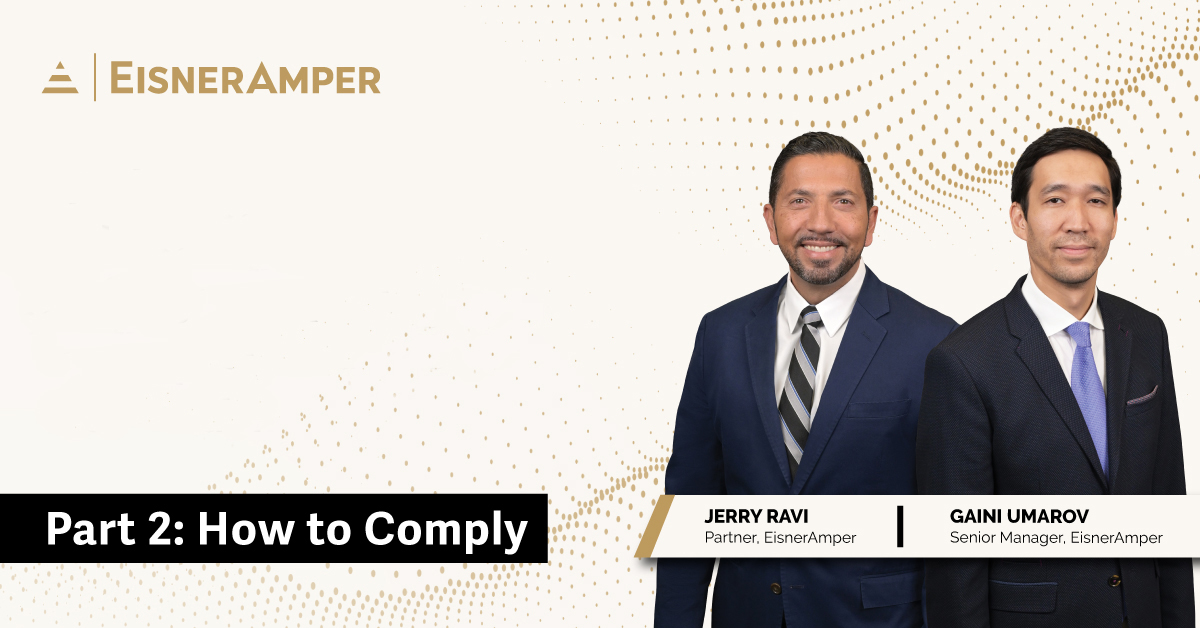Trends & Developments - June 2011 - Disclosure of Possible Losses
- Published
- Jun 30, 2011
- Topics
- Share
The accounting guidance (accounting principles generally accepted in the United States, or "GAAP") around disclosure of potential losses or contingencies has remained virtually unchanged for several years. The Financial Accounting Standards Board ("FASB") has released and rereleased a proposal about changing these disclosures, but has had to go back to the drawing board each time after receiving a combined 629 comment letters.
The current requirements are fairly simple. If the possibility of loss is "probable" and the amount can be "estimated," it is required to be recorded on the financial statements. If the possibility of loss is "reasonably possible," the estimated loss or range of loss should be disclosed, along with other information about the contingency. If the possibility of loss is "remote", while no disclosure is required, judgment must be used to assess whether substantial potential losses should be disclosed. The assessment as probable, reasonably possible or remote is generally based on the judgment of the company's attorney and does not follow specific quantitative criteria.
The disclosure by the company, and concurrence by its attorney and auditor, about these contingencies can be difficult to achieve. The company relies on its attorney to provide the judgments of possibility and loss, all while also protecting the company's position with regard to the litigation. The auditor is also reliant on the attorney's expertise and, to some extent, has the benefit of hindsight if the litigation is resolved in the intervening subsequent period. However, the requirements agreed to in the attorney's replies to auditor's requests by the American Bar Association is not part of, nor bound by, the accounting guidance, while the company in reporting its potential losses is so bound. In other words, if questioned on the disclosure or lack thereof, the company cannot pass responsibility to its attorney. The company must provide the disclosures required by GAAP, even if the information is not provided it by their attorney. The art of disclosure, then, is for the company to provide sufficient disclosure to inform its users and comply with GAAP, while their attorney helps protect the company from disclosing information which may be harmful to the company's position in the litigation.
One of the reasons that the FASB's proposals for change to these requirements have met stiff resistance is the belief that disclosing additional or specific information would enhance the possibility of affecting the ongoing litigation. Such fears under the current guidance, in addition to the potential financial statement and investor effect of such disclosures, may already lead companies, under the current accounting guidance, to be overly cautious in their disclosures in this area. The SEC staff has taken notice.
Recently, the SEC's Chief Accountant in its Division of Corporation Finance, Wayne Carnall, noted that companies were disclosing period after period that a loss couldn't be estimated, and perhaps qualifying that disclosure with language indicating that the estimate cannot be determined with certainty, precision or confidence. When the litigation is settled, the resulting settlement is then disclosed and recorded in that period. An observation was made by the SEC staff that, while in its initial stages a disclosure that a loss cannot be estimated might be appropriate, the longer a matter is open, the more probable that at least a range of loss can be estimated and that it would not be unprecedented that the range change over the course of the litigation. Mr. Carnall indicated that his staff would likely be asking companies questions about their disclosures that estimates cannot be made in their reviews of registration statements and periodic filings, as well as reviewing prior period filings when a material settlement is announced.
Additionally, the litigation disclosure requirements in preparing Item 3 of Form 10-K are different from those required by GAAP. Often, companies use the same or substantially the same disclosure in their financial statements and in the Item 3 portion of Form 10-K, even though the requirements are different, often leading to a deficiency in meeting one or the other requirement. Companies should consult with both their attorney and their auditor to ensure appropriate disclosures are being made, and monitor ongoing litigation for revisions which may be necessary to their disclosures.
Trends & Developments – June 2011
What's on Your Mind?
Start a conversation with Michael
Receive the latest business insights, analysis, and perspectives from EisnerAmper professionals.












